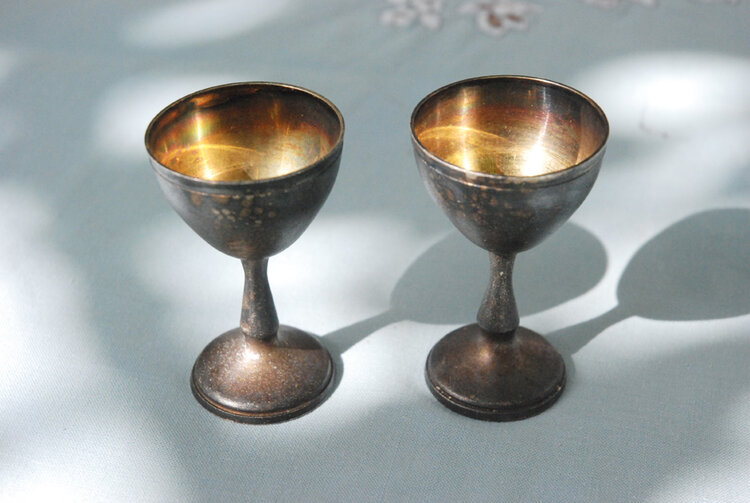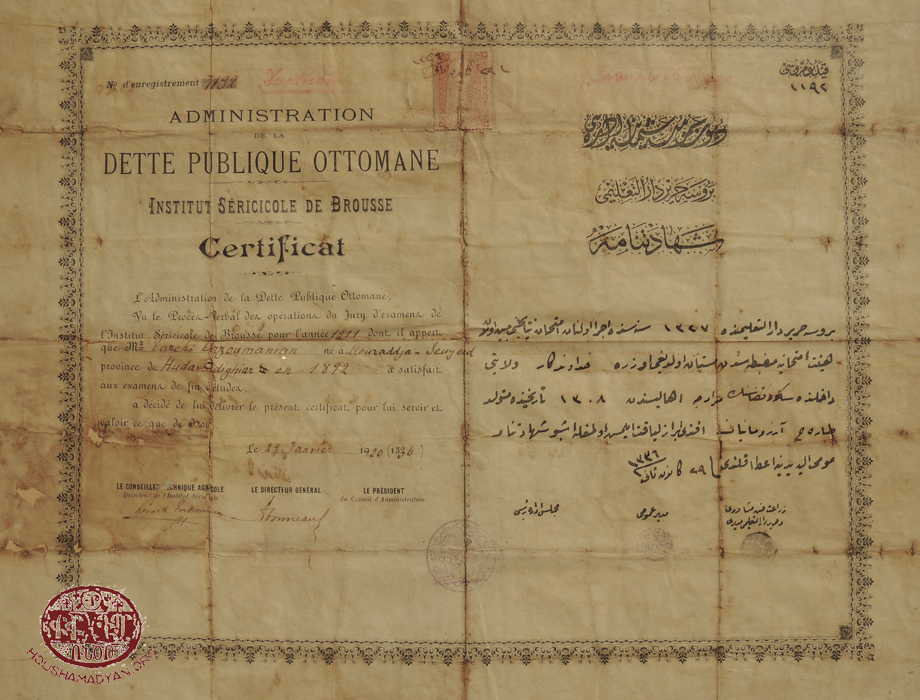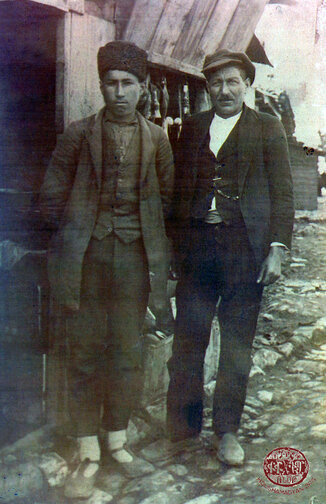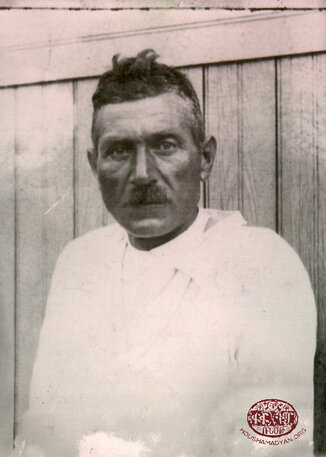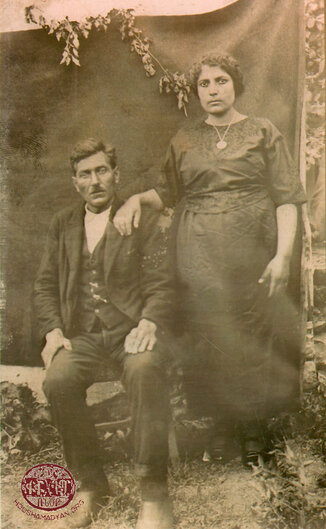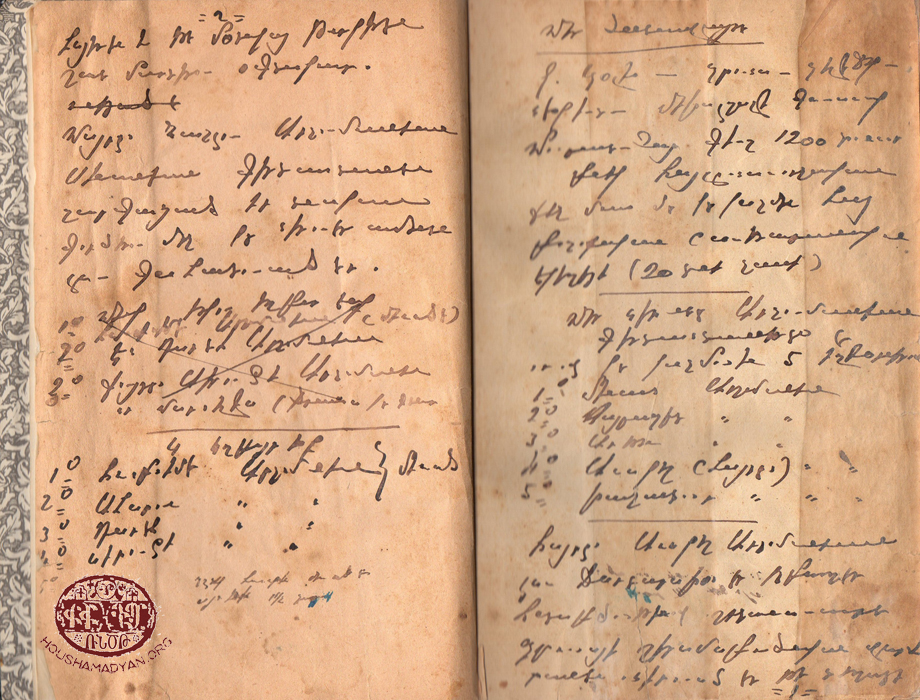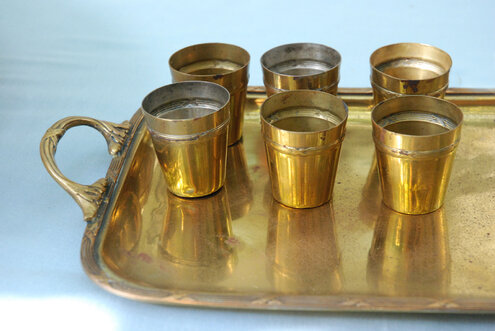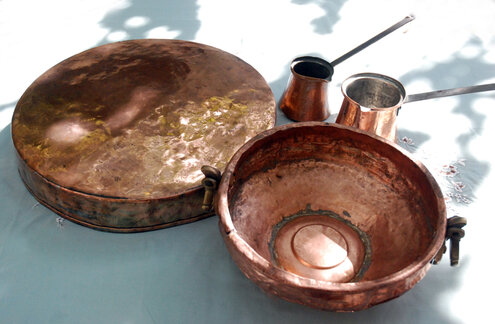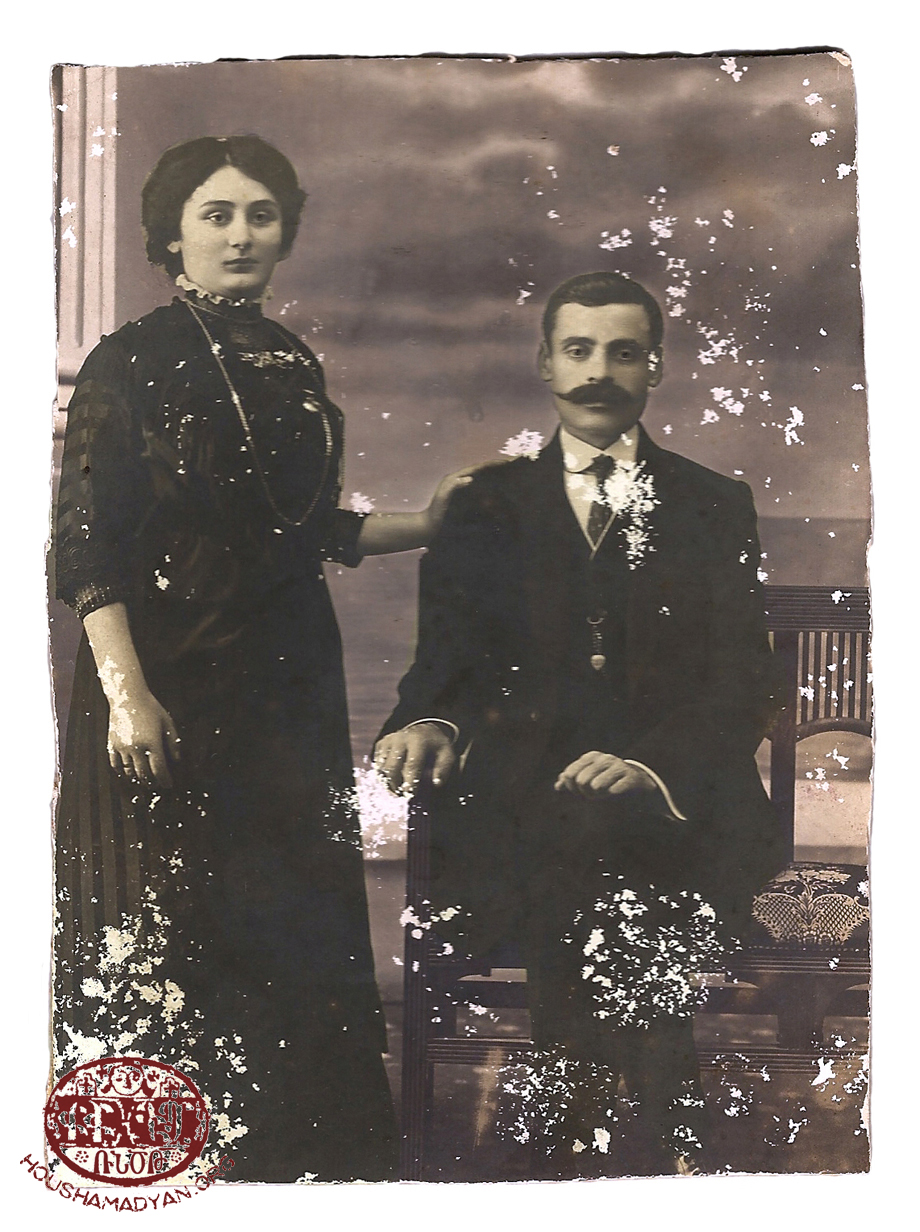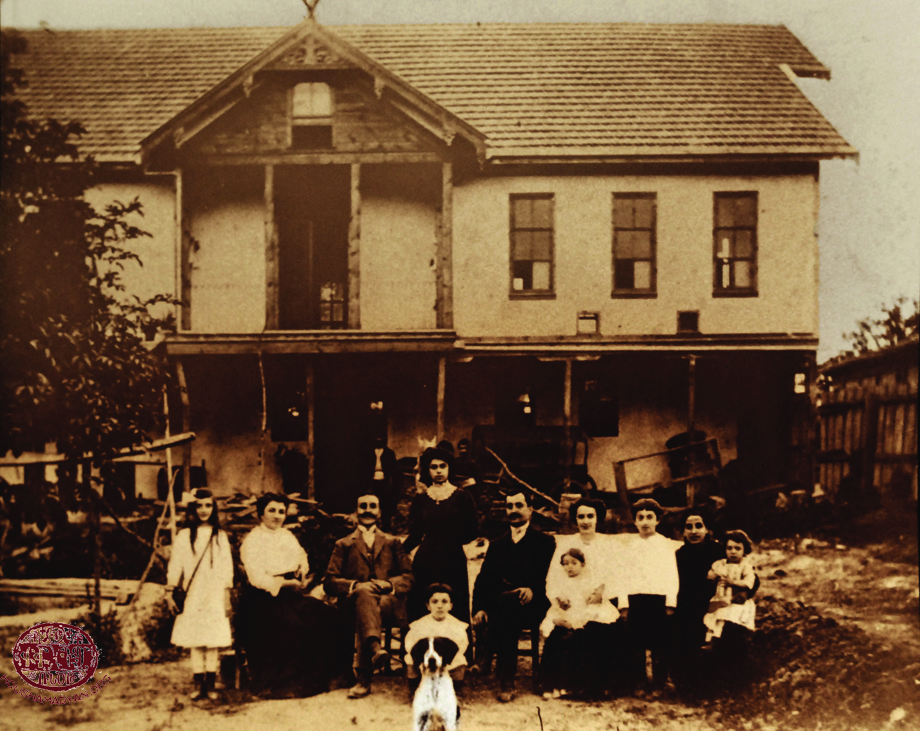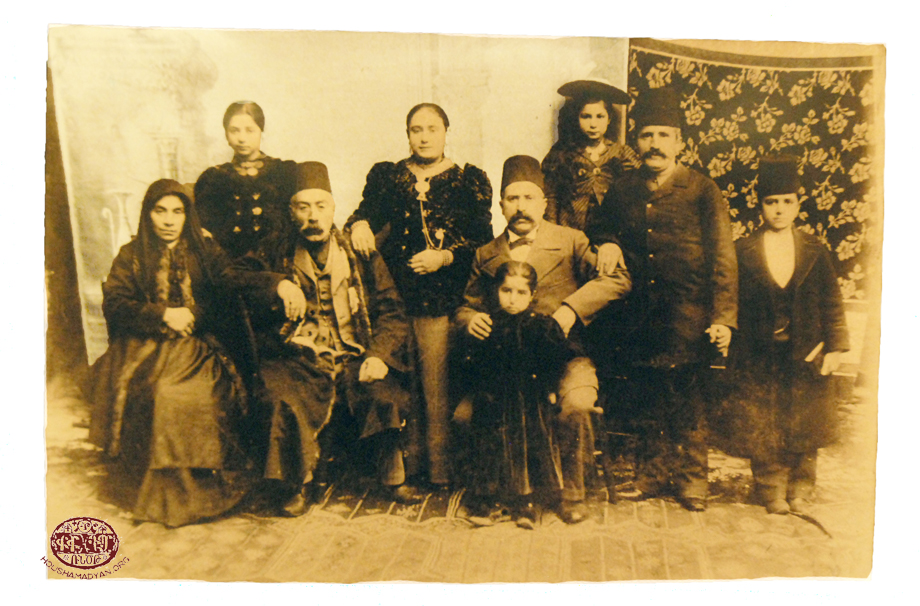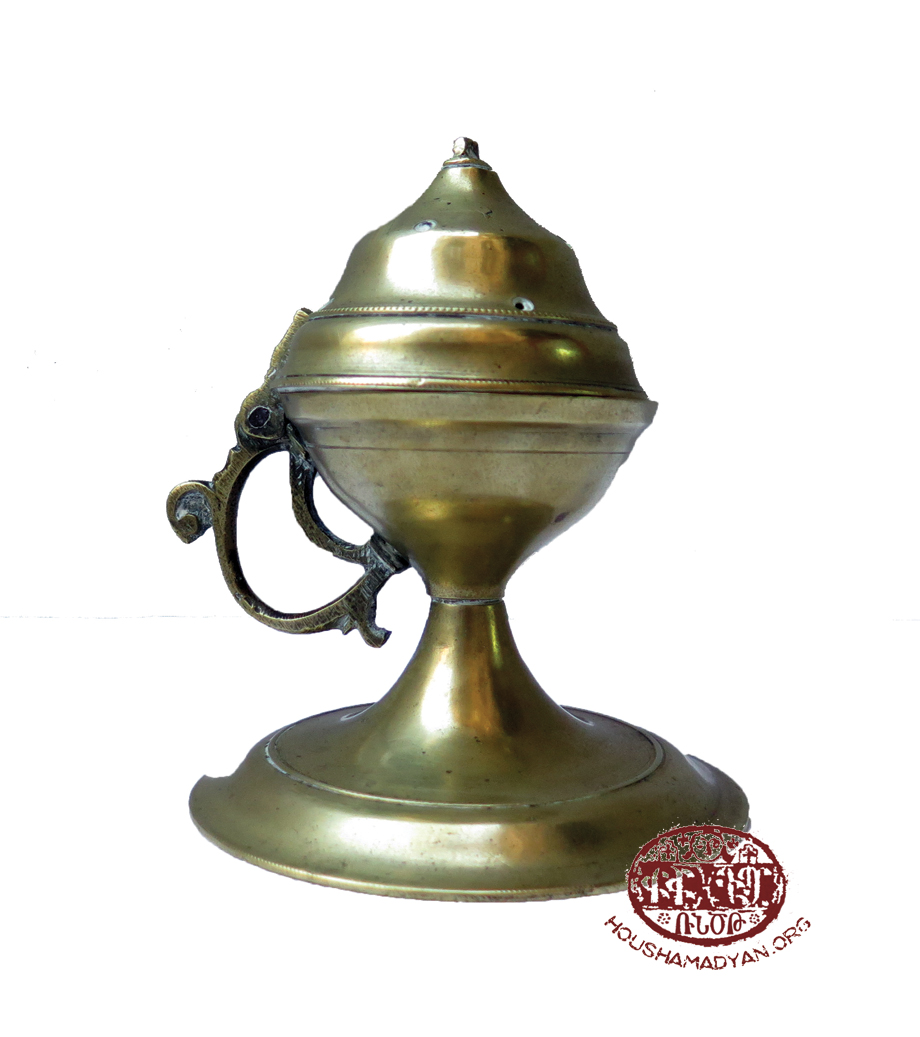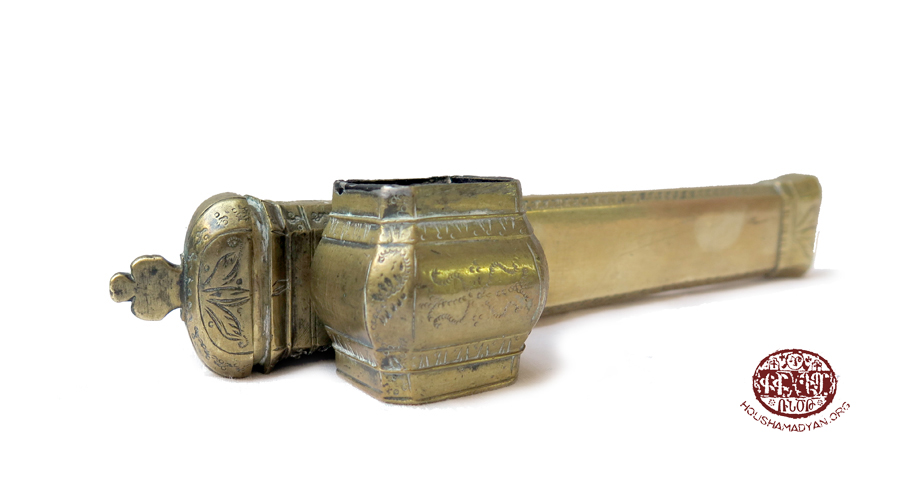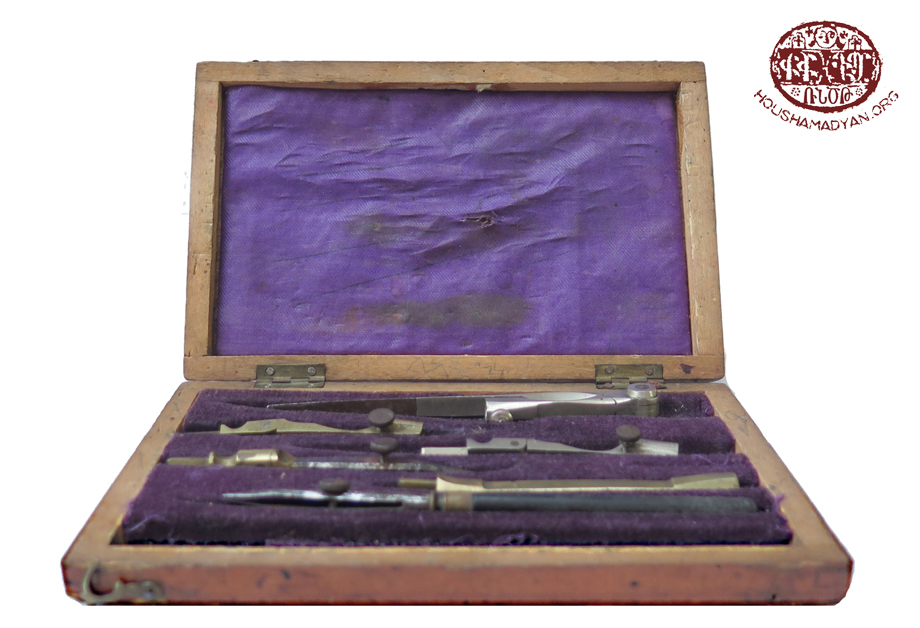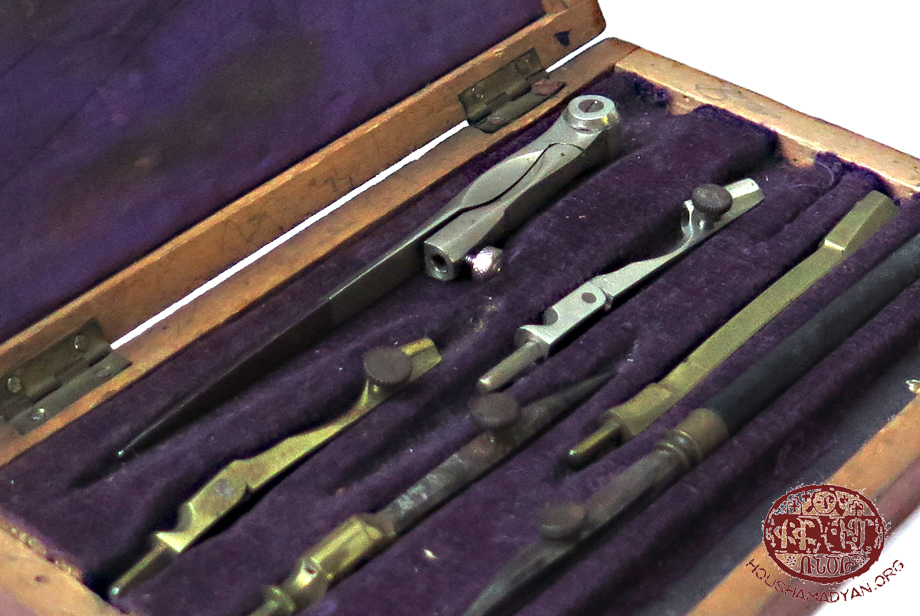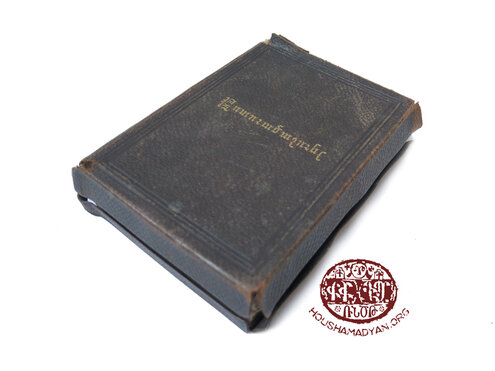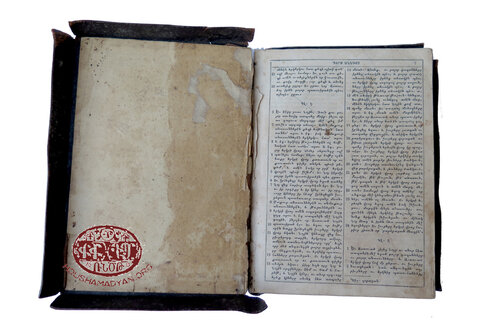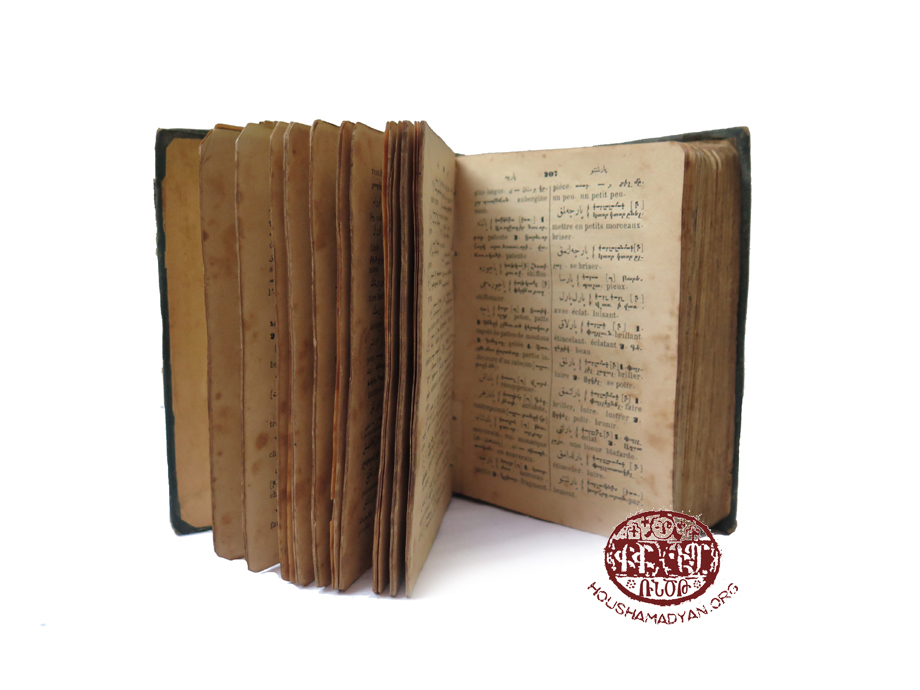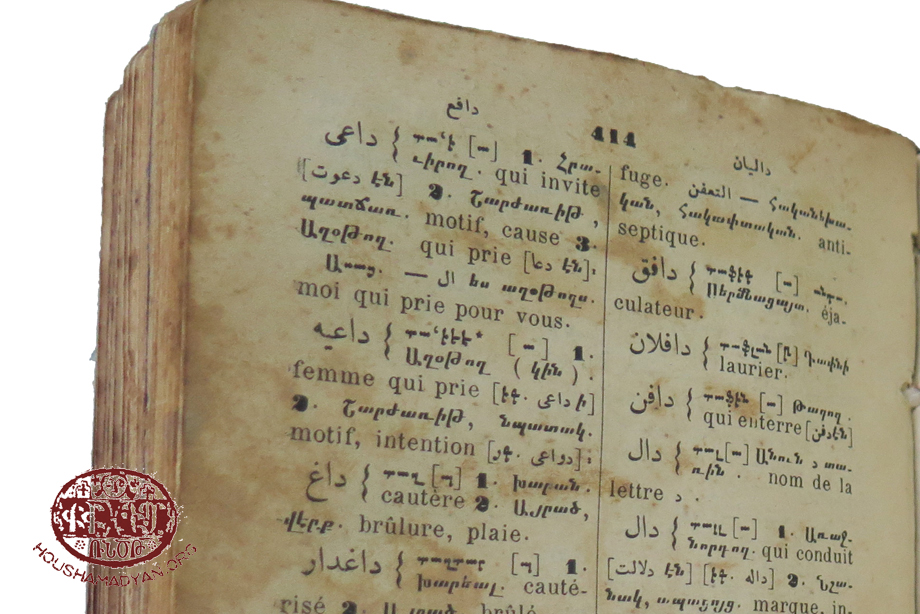Miscellaneous - Argentina
Ana Arzoumanian collection - Buenos Aires
This family collection belongs to Ana Arzoumanian. Her grandfather Tareh Arzoumanian was born in 1892 and was from the village of Muratça in Hudavendigar/Bursa. During the 1915 Genocide, he lost his wife and 4 daughters. After WWI, Tareh first went to Greece where he found his sister in one of the Armenian orphanages. Later, they went to Marseille together, after which they immigrated to Argentina and settled in Buenos Aires.
The last page of a Bible published in Istanbul (1921). This is one of the rare items that Tareh took with him to Argentina from the Ottoman Empire. Different notes about the family are written down on this page. He has written down his father’s name, Arakel Arzoumanian, and mentioned that the latter had 4 brothers: Hayrabed, Artin, Minas and Khachadour. Arakel, just like his son later on, was also a graduate of the silkworm breeding school in Bursa. His mother’s name was Nazlou Arzoumanian (born Minasian). He had 4 siblings: Hripsime, Aharon, Sirouhi and Yevkine (died at a very young age).
Kalaydjian family collection, Buenos Aires
The Kalaydjian family collection was put at Houshamadyan’s disposal by Marina Kalaydjian. All these items are kept in the Kalaydjian family collection which consists of different materials made from copper, including: 6 cups with their serving plate, 2 copper buckets, big and small coffee makers. The Kalaydjian family ancestors came from Hadjin, thus these objects are all from Hadjin. The metal cups on top of this page belong to this collection.
Akian collection, Buenos Aires
This photograph is currently in Maria Louisa Marashlian’s (born Akian) collection, Buenos Aires. The Akian ancestors are in the photograph: Louisa Kambourian (born Ohanian) and her husband, Artin Kambourian. They used to live in Ankara and later moved to Bursa, where they continued to live until their death in the 1930’s. After the death of their parents, the children emigrated to Argentina.
Nelida Boulghourdjian collection, Buenos Aires
These two photographs were given to us by Nelida Boulghourdjian. The people in these photographs are not her immediate family members, they are rather the photographs of other Armenians who came from the Ottoman Empire and settled in Argentina. Nelida was able to save these photographs from being lost.
The first photograph shows the Darakdjian family in Adapazar (present-day Sakarya) in 1910.
Shake Ovayan collection, Buenos Aires
Censer (metal), Hadjin
The censer belongs to Shake Ovayan. She inherited it from her grandfather Khachig (Khacher) Ovayan, who was born in Hadjin in 1860. It was customary to burn incense in this censer every Friday to get rid of the bad and the evil. Khacher and his wife Varvar had two children. The children were the only ones who survived the Genocide, and they, like thousands of Armenians after the war, returned to Cilicia, which was under French rule at the time. They went back to Hadjin where they found that their home was burnt down, they were able to salvage a few objects from under the rubble – this censer was one of the salvaged items. The surviving Ovayans left Hadjin for Adana, however, towards the end of 1921, the French withdrew from Cilicia leaving the region to Turkey. Thousands of Armenians were forced to leave again. The Ovayans left for the Greek Chios Island where they lived for two years. They later moved to the north of the country, to Kavala where they lived until 1951. Afterwards they immigrated to Argentina taking this family heirloom with them.
Majian collection, Buenos Aires
Copper pen box - divid. It belonged to Bedros Majian, who was born in Hadjin in 1869 and died in Buenos Aires in 1982. Bedros was a Genocide survivor. He had first immigrated to Marseille (France) and went to Argentina in 1924. The pen box is currently the inheritance of his grandchildren: Edgardo, Silvana, Mariano and Cecilia, who all reside in Buenos Aires.
Babahekian collection, Buenos Aires
All the mementos in the Babahekian family collection come from Hadjin. A family ancestor, named Toros Babahekian, was from Hadjin and was an architect by profession. Toros had managed to bring this wooden box with him from Hadjin to Argentina. The box is full of architectural tools like a compass etc.
